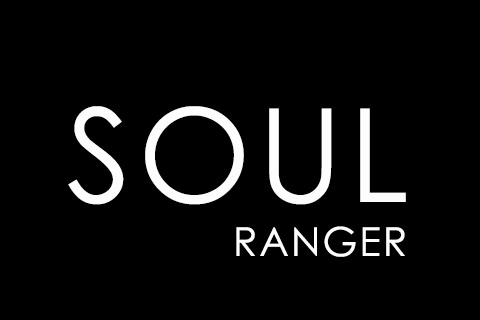Vietnam Veterans Memorial
Memorial History
Jan C. Scruggs, a wounded Vietnam War vet, studied what is now called post-traumatic stress disorder upon his return to the United States. Within a few years, he began calling for a memorial to help with the healing process for the roughly 3 million Americans who served in the conflict. After watching the movie “The Deer Hunter,” Scruggs apparently stepped up his activism even further, using $2,800 of his own money to form the Vietnam Veterans Memorial Fund in 1979. Many politicians expressed their support, and the U.S. Congress passed legislation reserving three acres in the northwest corner of the National Mall for a future monument. All donations, however, came from the private sector. Bob Hope and other celebrities lended a hand with fundraising, and by 1981 some 275,000 Americans, along with corporations, foundations, veterans groups, civic organizations and labor unions, had given $8.4 million to the project.
Credits: Jesse Greenspan, History Channel
Maya Ying, Architect
The Memorial was designed by an undergraduate at Yale University, Maya Ying Lin, born in Athens, Ohio in 1959. Her parents fled from China in 1949 when Mao-Tse-tung took control of China, and she is a native-born American citizen. She acted as a consultant with the architectural firm of Cooper- Lecky Partnership on the construction of the Memorial.
Vietnam Veteran’s Memorial, Washington, D.C.
Maya Ying wanted to create a park within a park – a quiet protected place onto itself, yet harmonious with the overall plan of Constitution Gardens. The walls have a mirror-like surface (polished black granite) reflecting the images of the surrounding trees, lawns, monuments, and visitors. The walls seem to stretch into the distance, directing us towards the Washington Monument, in the east, and the Lincoln Memorial, to the west, thus bring the Vietnam Veterans Memorial into a historical context.
There are 58,267 names now listed on that polished black wall, including those added in 2010.
The names are arranged in the order in which they were taken from us by date and within each date the names are alphabetized.
Beginning at the apex on panel 1E and going out to the end of the East wall, appearing to recede into the earth (numbered 70E – May 25, 1968), then resuming at the end of the West wall, as the wall emerges from the earth (numbered 70W – continuing May 25, 1968) and ending with a date in 1975. Thus the war’s beginning and end meet. The war is complete, coming full circle, yet broken by the earth that bounds the angle’s open side and contained within the earth itself.
Those Who Died
- There are three sets of fathers and sons on the Wall
- 39,996 on the Wall were just 22 or younger
- The largest age group, 8,283 were just 19 years old
- 3,103 were 18 years old
- 12 soldiers on the Wall were 17 years old
- Five soldiers on the Wall were 16 years old
- One soldier, PFC Dan Bullock was 15 years old
- 997 soldiers were killed on their first day in Vietnam
- 1,448 soldiers were killed on their last day in Vietnam
- 31 sets of brothers are on the Wall
- Thirty one sets of parents lost two of their sons
- 54 soldiers on the Wall attended Thomas Edison High School in Philadelphia
- Eight women are on the Wall. Nursing the wounded
- 244 soldiers were awarded the Medal of Honor during the Vietnam War; 153 of them are on the Wall
Anecdotal Facts About the Casualties
- The first known casualty was Richard B. Fitzgibbon, of North Weymouth, Mass. listed by the U.S. Department of Defense as having been killed on June 8, 1956. His name is listed on the Wall with that of his son, Marine Corps Lance Cpl. Richard B. Fitzgibbon III, who was killed on Sept. 7, 1965.
- Beallsville, Ohio with a population of 475 lost six of her sons.
- West Virginia had the highest casualty rate per capita in the nation. There are 711 West Virginians on the Wall.
- The Marines of Morenci – They led some of the scrappiest high school football and basketball teams that the little Arizona copper town of Morenci (pop. 5,058) had ever known and cheered. They enjoyed roaring beer busts. In quieter moments, they rode horses along the Coronado Trail, stalked deer in the Apache National Forest. And in the patriotic camaraderie typical of Morenci’s mining families, the nine graduates of Morenci High enlisted as a group in the Marine Corps. Their service began on Independence Day, 1966. Only three returned home.
- The Buddies of Midvale – LeRoy Tafoya, Jimmy Martinez, Tom Gonzales were all boyhood friends and lived on three consecutive streets in Midvale, Utah on Fifth, Sixth and Seventh avenues. They lived only a few yards apart. They played ball at the adjacent sandlot ball field. And they all went to Vietnam. In a span of 16 dark days in late 1967, all three would be killed. LeRoy was killed on Wednesday, Nov. 22, (the fourth anniversary of John F. Kennedy’s assassination). Jimmy died less than 24 hours later (Thanksgiving Day) and Tom was shot dead assaulting the enemy (on Dec. 7, Pearl Harbor Remembrance Day).
- The most casualty deaths for a single day was on January 31, 1968 – 245 deaths.
- The most casualty deaths for a single month was May 1968 – 2,415 casualties were incurred. That’s 2,415 dead in a single month!
Credits: Written by Cpl. Beddoe http://www.usmc81.com/2011/06/vietnam-veterans-memorial-facts/
 Soul Ranger
Soul Ranger